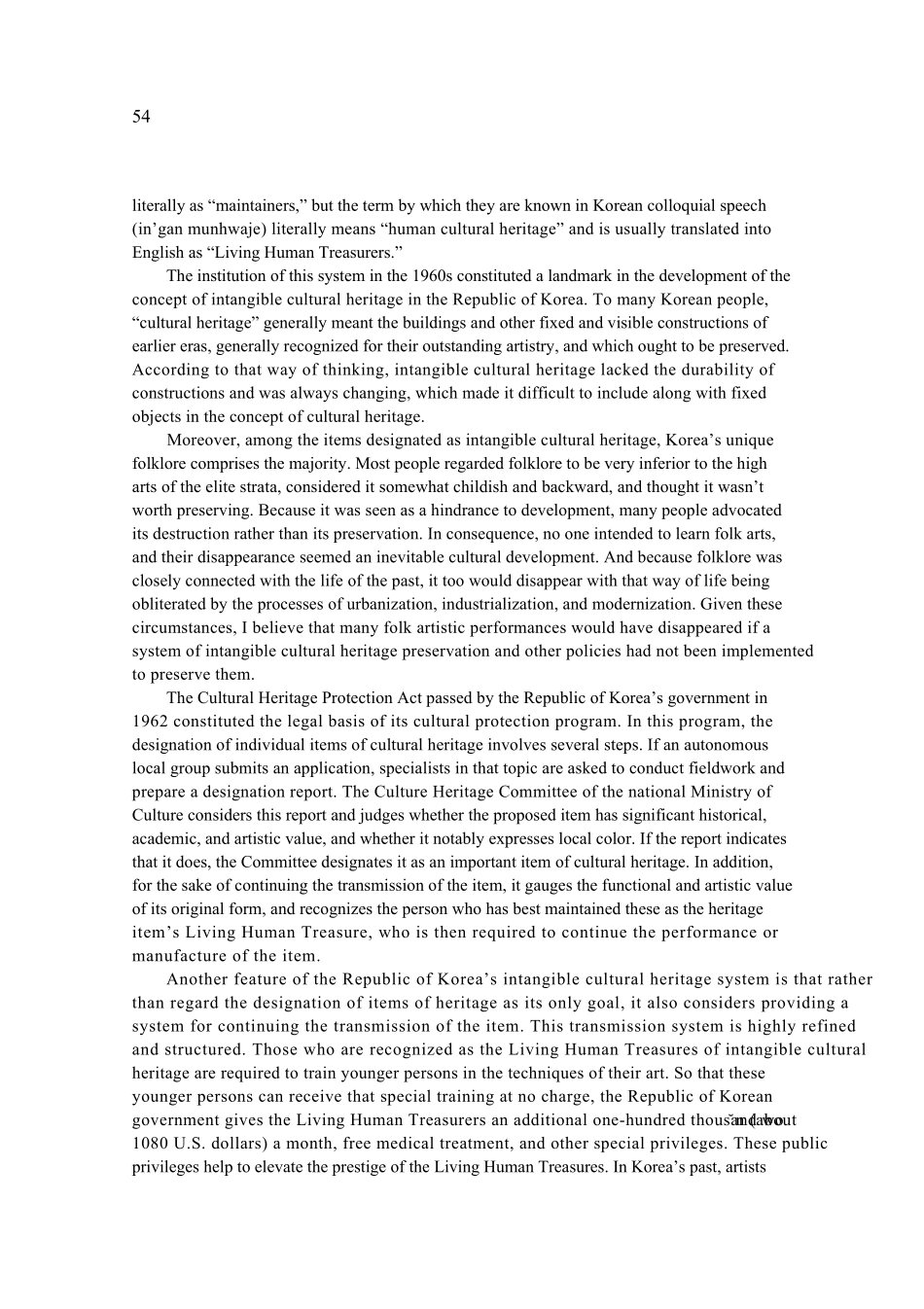53Dawnhee Yim Dongguk University In my presentation today, I would like to give a brief account of the Republic of Korea’sintangible cultural heritage preservation policies. Of course, the Republic of Korea’s is not theonly such program in the world, but it has been regarded as highly successful in protectingmuch of the cultural heritage that would otherwise have disappeared. Moreover, unlike fixedtangible heritage, the preservation and transmission of intangible culture requires very differentpolicies and methods. In light of these considerations, it seems worthwhile to present a briefdiscussion of the Republic of Korea’s experiences with its intangible cultural preservationpolicies and their significance. For centuries, Korea had been a predominantly agricultural society, the overwhelmingmajority of its population engaged in farming. As a result of the rapid industrialization thatbegan in the 1960s, however, much of the population migrated from farming villages to cities.And during this period, American-centered Western culture had an enormous impact. Owing tothis simultaneous industrialization, urbanization, and westernization, the older way of life wasrapidly disappearing. The older arts, rituals, and other kinds of intangible cultural expressionthat articulated the formerly prevalent way of life were also in jeopardy of rapidly disappearing.The instigation of the Intangible Cultural Heritage system was intended to designate thevaluable forms of expression that were being pushed to extinction by modern civilization, toprotect them, and to ensure their continued transmission. The term “Intangible Cultural Heritage” was defined as music, dance, drama, games,ceremonies, martial arts, and other related arts and crafts, as...


